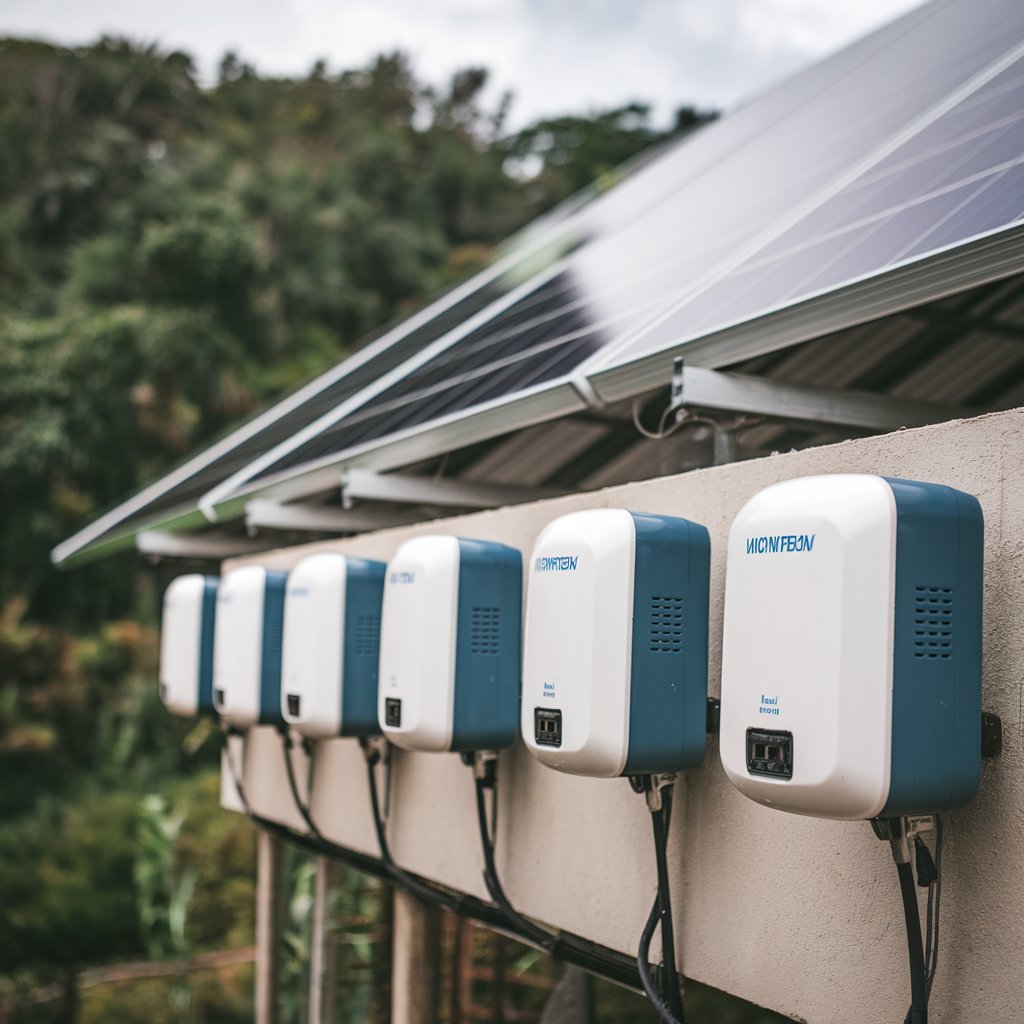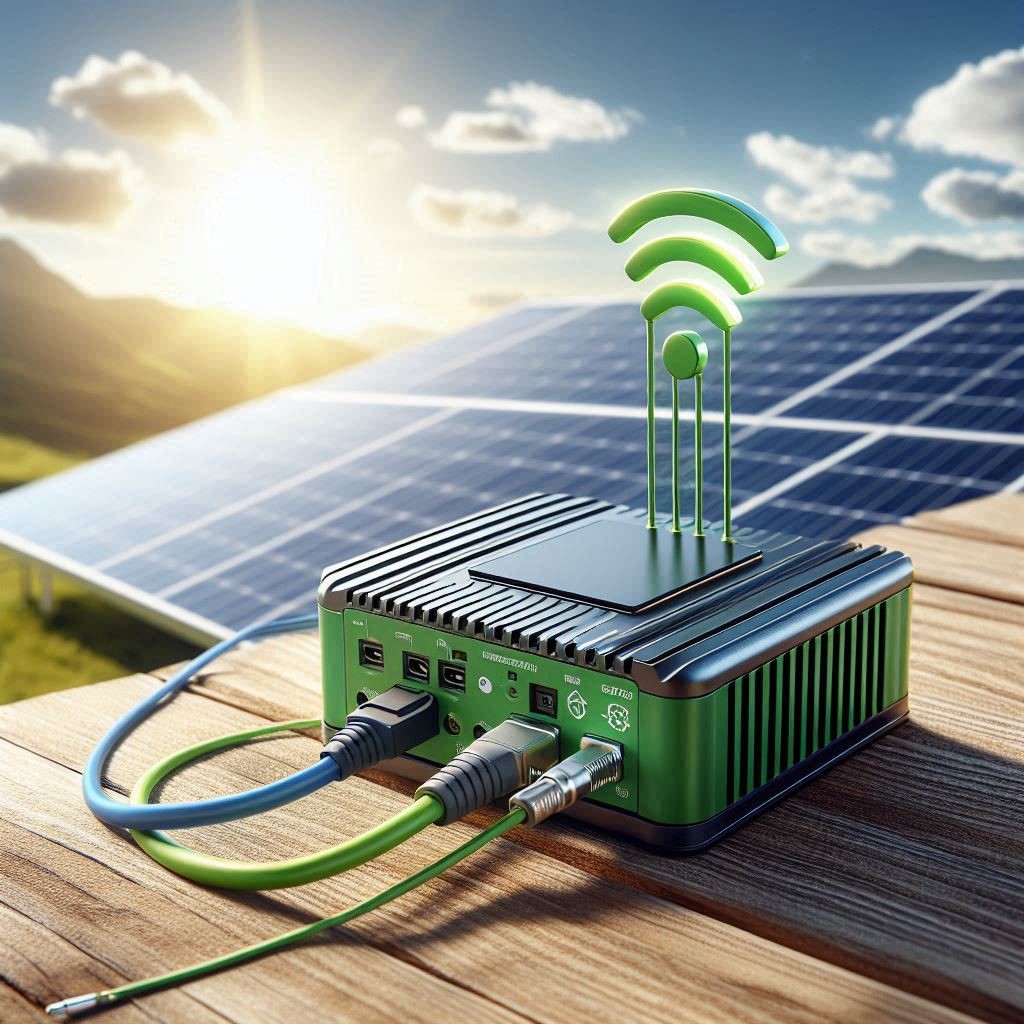As the world embraces clean energy, the solar power industry is witnessing a wave of innovation. Among the most transformative developments is the integration of Artificial Intelligence (AI) into micro inverters—devices that convert direct current (DC) from individual solar panels into alternating current (AC). Unlike traditional inverters that manage strings of panels collectively, micro inverters operate at the panel level, offering more precise control. With AI, these devices are becoming even smarter, enabling better energy efficiency, real-time diagnostics, predictive maintenance, and seamless grid interaction. This fusion of AI and solar hardware is revolutionizing how we manage and optimize solar energy systems.

Panel-Level Optimization Through AI
One of the key advantages of micro inverters is their ability to optimize power output per panel, eliminating performance bottlenecks caused by shading, dust, or panel mismatch. With AI, this capability is significantly enhanced. Machine learning algorithms analyze data such as sunlight patterns, temperature variations, and panel aging to continuously fine-tune the energy output of each module. This intelligent optimization helps maximize energy production throughout the day, even in suboptimal conditions. Over time, AI learns from site-specific behavior, adapting to seasonal changes and environmental factors, ultimately boosting system efficiency and reducing the levelized cost of energy (LCOE).
Predictive Maintenance and Fault Detection
Maintenance is a critical component in solar energy systems, and AI is redefining how it’s approached. Traditional maintenance often relies on periodic inspections or reactive fixes after performance drops. With AI, micro inverters can detect anomalies in voltage, temperature, or current flows before they escalate into failures. These systems use historical data and pattern recognition to predict component wear or thermal stress, sending alerts for proactive servicing. This predictive maintenance reduces downtime, minimizes repair costs, and extends the operational lifespan of the inverters. It’s especially valuable in large-scale solar farms, where early detection of issues can significantly improve overall output and profitability.
Download PDF Brochure @
https://www.marketsandmarkets.com/pdfdownloadNew.asp?id=43340469
Smart Grid Interaction and Energy Flexibility
As more homes and businesses generate solar power, the need for smarter grid interaction is growing. AI-powered micro inverters can communicate with grid operators, adjust energy output based on demand, and participate in demand response programs. These intelligent systems are capable of managing voltage fluctuations, controlling reactive power (volt/VAR), and ensuring grid stability. In areas with dynamic electricity pricing, AI can help inverters decide whether to use, store, or sell electricity based on real-time price signals or grid congestion. This makes AI-integrated micro inverters essential in future smart grid and microgrid infrastructures.

Advanced Monitoring and User Insights
Modern users demand more visibility into their solar systems, and AI delivers just that through advanced monitoring platforms. These systems provide real-time analytics, alert notifications, and personalized energy reports. Homeowners can view energy production trends, detect performance drops, and even receive recommendations for system upgrades or usage changes. For installers and service providers, AI analytics support better system diagnostics and remote troubleshooting, improving customer service and reducing time on site. This level of transparency and control increases user engagement and confidence in solar investments.
Challenges and the Road Ahead
While the integration of AI offers clear advantages, it also brings challenges. Data privacy is a major concern, especially when systems rely on cloud-based analytics and customer-specific data. Manufacturers must implement secure data handling practices and transparent policies. Interoperability between devices, especially in mixed-component systems, is another hurdle. Industry standards and open protocols like SunSpec are helping address this. Finally, while AI features may increase upfront costs, the long-term gains in energy efficiency, system reliability, and maintenance savings often justify the investment. Looking ahead, we can expect AI-enabled micro inverters to become integral to energy systems that are not only cleaner, but also smarter and more resilient.
Conclusion: The Intelligent Future of Solar
AI is transforming the micro inverter industry from a hardware-driven sector into a software-defined ecosystem. With capabilities like real-time optimization, predictive maintenance, grid adaptability, and user-focused analytics, AI-powered micro inverters are becoming strategic assets in the clean energy transition. As solar adoption continues to rise globally, the role of AI in enhancing performance, reducing costs, and enabling smarter energy management will only grow. The future of solar energy isn’t just about generating power—it’s about generating intelligent power.
The Top micro-inverter companies includes significant Tier I and II players like Enphase Energy (US), Altenergy Power Systems (US), Hoymiles (China), Ningbo Deye Inverter Technology Co Ltd (China), Chilicon Power LLC (US), AEconversion GmbH & CO. KG (Germany), Envertech (China), ZJBENY (China), Bluesun Solar Co., Ltd. (China), and Solar Panels Plus (US), are some of the key players in the micro-inverter Industry.
Frequently Asked Questions (FAQ) for the article How AI Is Transforming the Micro Inverter Industry:
What is a micro inverter and how does it differ from a traditional inverter?
A micro inverter is a small device installed on each individual solar panel that converts direct current (DC) to alternating current (AC). Unlike traditional string inverters that handle a group of panels together, micro inverters optimize performance at the panel level, improving efficiency and system reliability.
How is Artificial Intelligence (AI) used in micro inverters?
AI is used to analyze real-time and historical data to optimize energy output, detect faults early, predict maintenance needs, and adjust performance based on weather, shading, or grid conditions. This enhances system efficiency and reduces downtime.
What are the benefits of using AI-enabled micro inverters?
Key benefits include:
-
Improved panel-level energy yield
-
Predictive maintenance and fault prevention
-
Real-time performance monitoring
-
Smart grid interaction and demand response compatibility
-
Reduced long-term operating costs
Can AI help reduce solar energy costs?
Yes, by optimizing performance and reducing maintenance needs, AI helps lower the levelized cost of energy (LCOE), making solar installations more cost-effective over time.
Are AI-powered micro inverters secure and compliant with data privacy standards?
Leading manufacturers are incorporating encryption, edge processing, and secure cloud systems to ensure data privacy and compliance with standards such as GDPR. However, users should review privacy policies before installation.
What industries benefit most from AI-integrated micro inverter systems?
Residential, commercial, and utility-scale solar sectors all benefit, especially in regions with high grid variability, dynamic pricing, or large-scale solar deployments that require detailed monitoring and optimization.
What is the future outlook for AI in the micro inverter market?
The future includes deeper integration with smart homes, energy storage systems, electric vehicles, and grid services. AI will continue to evolve, enabling autonomous solar systems that self-optimize and self-heal.
